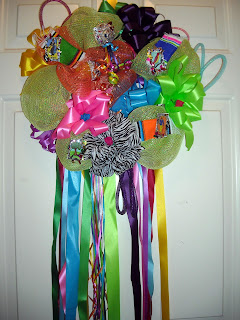 |
| Judy Blume and Author |
Writing Historical Fiction
Historical fictiontells a story that is set in the past. That setting is usually real and drawn from history, and often contains actual historical persons, but the main characters tend to be fictional. — Wikipedia
The Slush Pile
 to make sure you’re sending out your very best. No writer wants their work to end up in that dreaded slush pile. On Notes from the Slushpile, Agent Jenny Savill and author Sara Grant collaborate and offer writing tips on revision. That’s right, revision. I talk about it all the time. Writers, it’s part of the process. Some of Savill and Grant’s advice: “ … perhaps you need to flesh out the world of the story. Perhaps you need to rein it in. It might be that the manuscript stays basically the same structurally and changes only in more subtle ways, but one of the things that tends to happen is that old stuff from earlier drafts lingers in the latest draft.”
to make sure you’re sending out your very best. No writer wants their work to end up in that dreaded slush pile. On Notes from the Slushpile, Agent Jenny Savill and author Sara Grant collaborate and offer writing tips on revision. That’s right, revision. I talk about it all the time. Writers, it’s part of the process. Some of Savill and Grant’s advice: “ … perhaps you need to flesh out the world of the story. Perhaps you need to rein it in. It might be that the manuscript stays basically the same structurally and changes only in more subtle ways, but one of the things that tends to happen is that old stuff from earlier drafts lingers in the latest draft.”
Slush Pile: The stack of unsolicited or misdirected manuscripts received by an editor, agent, or book publisher. – Writer’s Digest Weekly Planner
Writing Contests
| Santa Fe |
mentioned before that I started out by submitting my first stories to magazines. If you’ve never published before, this is a great way to get in print. There’s nothing more exciting than seeing your name in a byline. Your confidence and your credibility soar. So here are three magazines that are accepting submissions. Make sure you follow the guidelines and submit before the deadlines. Wishing you luck with your writing!!
Byline: Name of the author appearing with the published piece.—Writer’s Digest Weekly Planner
First page of a manuscript
| Well at Mission San Jose |
Synopsis: A brief summary of a story, novel, or play. As part of a book proposal, it is a comprehensive summary condensed in a page or page and a half, single-spaced. – Writer’s Digest Weekly Planner
The Pitch
 When an agent or editor asks you what your story is about, do you automatically come up with a genius pitch? Or are you like most of us who fumble around trying to come up with a good pitch using only a couple of sentences? Do the editors’ eyes glaze over or are they focused on what you’re saying because it peaks their interest? It’s hard to summarize your entire story into a few words. But maybe this post, “One Simple Way to Sharpen Your Pitch,” written by Zachary Petit on The Writer’s Digest blog will help. It’s never too late to start practicing that pitch for when you’re at a conference and come face to face with editors and agents.
When an agent or editor asks you what your story is about, do you automatically come up with a genius pitch? Or are you like most of us who fumble around trying to come up with a good pitch using only a couple of sentences? Do the editors’ eyes glaze over or are they focused on what you’re saying because it peaks their interest? It’s hard to summarize your entire story into a few words. But maybe this post, “One Simple Way to Sharpen Your Pitch,” written by Zachary Petit on The Writer’s Digest blog will help. It’s never too late to start practicing that pitch for when you’re at a conference and come face to face with editors and agents.
Anatomy of a book? Really? This is a fun post to read. Who knew there were terms to describe the anatomy of a book.
Hook: Aspect of the work that sets it apart from others and draws in the reader/viewer. — Writer’s Digest Weekly Planner
Submission replies
School Presentation
 I just did a presentation at the University of the Incarnate Wordand was thrilled by the presence and enthusiasm of the students attending. They are students in the Children’s Literature Class in Spanish at the university. Professor Mondriguez was kind enough to invite me to present a session on the writing process and creating picture books.
I just did a presentation at the University of the Incarnate Wordand was thrilled by the presence and enthusiasm of the students attending. They are students in the Children’s Literature Class in Spanish at the university. Professor Mondriguez was kind enough to invite me to present a session on the writing process and creating picture books.
 |
| SMILE! |
Fiesta Week
“Know yourself. Listen to a lot of music. Don’t whine. Maintain your sense of humor; indulge your sense of play. Persist, persist, persist.” — Kathleen Krull
National Library Week
 |
| Texas A&M; San Antonio Courtyard |



